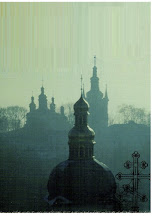 |
| Panama, two seas away from MAGAmerica |
 |
| Frog from Venado Beach in a US museum |
If they do, no doubt there will be more looting of the archaeological sites of the area, it's worth noting a rather disturbing series of field projects by US archaeologists in the region from the end of the 1940s and 1950s onwards that dug up lots of stuff (some of which ended up "somehow" in US museums) but were rarely properly published. Some ended up as grey literature in the form of students' theses in US university archives, some were publicised by breathless-discovery (and gold) themed articles in magazines like National Geographic, but where are the monographs? And where are the full site reports in the local language - which is Spanish and not US English?
An example of this is the ("Cocle Culture" [?]) site at Venado Beach, an unpublished site "discovered by the U.S. Navy in 1948 while bulldozing off the topsoil in order to enrich the lawns of the 15th Naval District". The subsequent excavation is rather poorly recorded, with the finds dispersed - some of them having been dug up by US servicemen stationed at Fort Kobbe. There are a number of items in US collections that were "gifts of" (ie come from the antiquities market), for example of the "Veraguas-Chiriquí Region/ culture" (Panama and Costa Rica, 500 - 1000AD) in Birmingham Alabama, a pendant in Brooklyn, a frog pendant in the NY Met. and so on. Maybe it is time to decolonise these museum collections.
 |
| Cocle bowl, Panama |
References
Lothrop, S. K. (1954). "Suicide, Sacrifice and Mutilations in Burials at Venado Beach, Panama". American Antiquity. 19 (3): 226–234.Doyle, James (2015-08-18). "Unearthing Gold Masterpieces from Venado Beach, Panama". The Metropolitan Museum of Art.
Wardwell, Allen (1973). "Some New Acquisitions of Pre-Hispanic Gold". Bulletin of the Art Institute of Chicago. 67 (1): 16–20. doi:10.2307/4111236. ISSN 0094-3312. JSTOR 4111236.







No comments:
Post a Comment